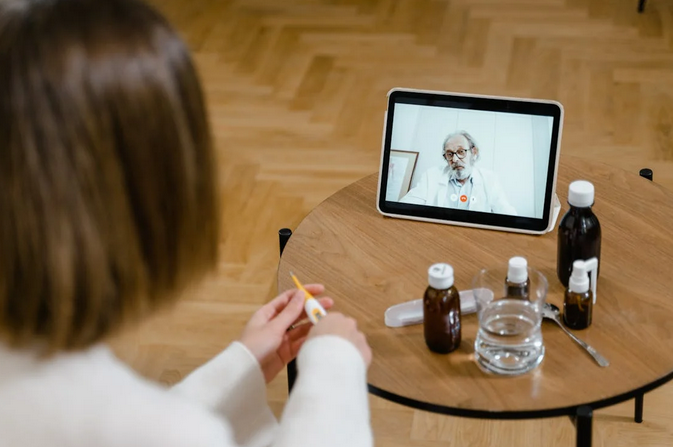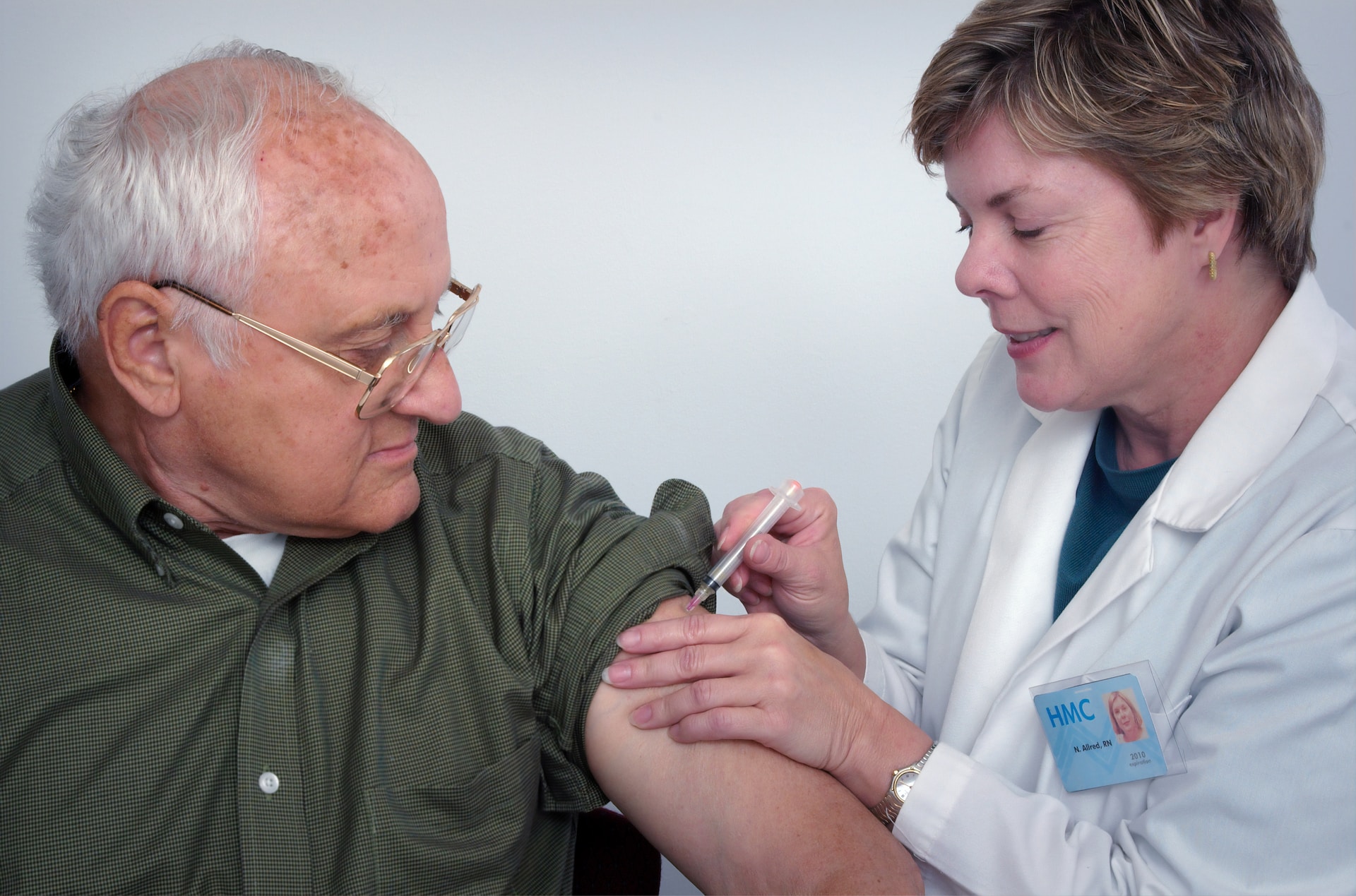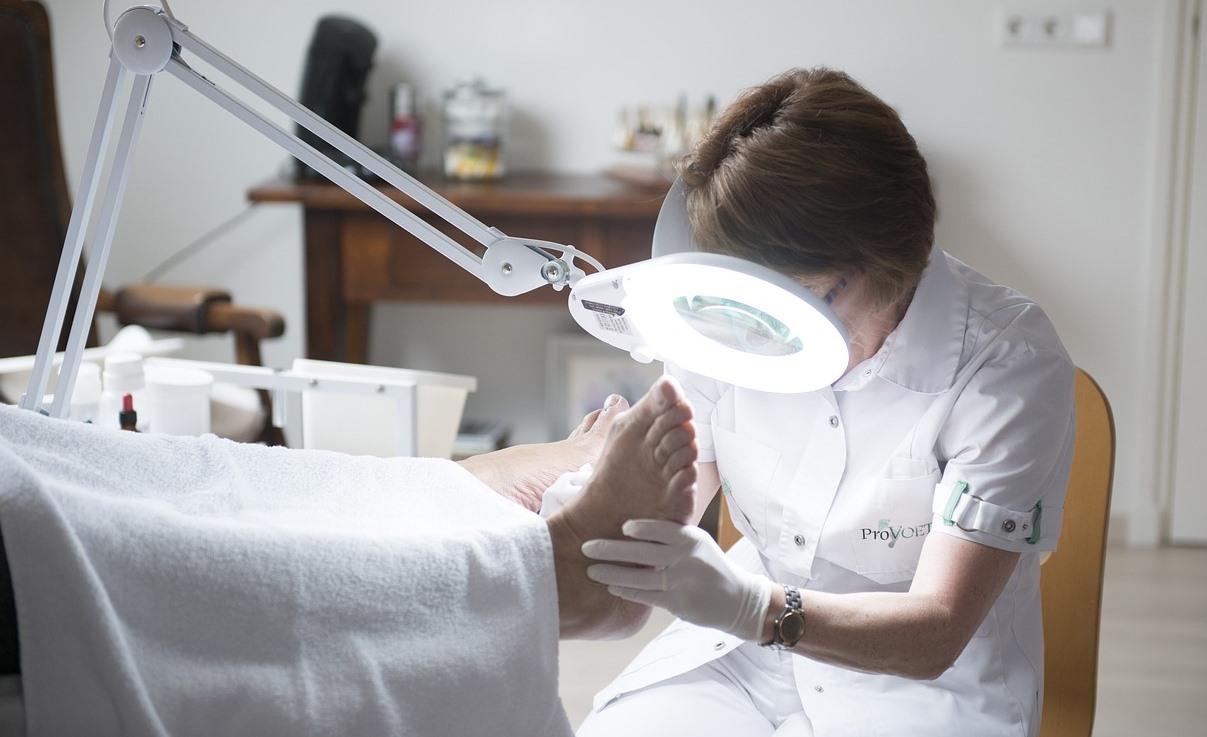Telemedicine has transformed the way we approach healthcare. The convenience of visiting a doctor from home appeals to many, yet misconceptions still linger. These myths can prevent people from exploring this innovative option and enjoying its benefits. Let’s dive into some common misunderstandings about telemedicine and set the record straight! Whether you’re curious about virtual visits or hesitant to try them out, it’s time to uncover the truth behind these myths.
Telemedicine Is Only for Minor Health Issues
A common misconception is that telemedicine is only suitable for minor health issues. This couldn’t be further from the truth. Telehealth services can effectively address a wide range of medical conditions. Providers are equipped to handle everything from chronic illness management to mental health consultations. Many specialists now offer virtual appointments, making it easier for patients to access expert care without traveling long distances.
For instance, dermatologists can evaluate skin conditions through high-quality images, while psychiatrists conduct therapy sessions seamlessly online. Patients with ongoing illnesses can monitor their symptoms and adjust treatments through virtual visits. As technology continues to advance, the scope of what telemedicine can manage will likely expand even further, proving it’s not just for those sniffles or minor aches.
Virtual Visits Are Less Effective Than In-Person Appointments
Many people assume that virtual visits lack the quality of in-person appointments. This belief can stem from a long-standing reliance on face-to-face interactions in healthcare. However, studies indicate telemedicine can be just as effective for numerous conditions. Doctors can diagnose and treat various issues through video consultations. They often rely on visual cues and patient history to provide accurate care. Moreover, technology has advanced significantly. High-definition video and secure platforms allow doctors to assess patients clearly. Remote monitoring tools also aid in seamlessly tracking health metrics.
Patients appreciate the convenience of not having to travel or wait in crowded waiting rooms. Virtual visits save time while ensuring timely access to care, especially for those with mobility challenges or living in remote areas. The effectiveness of telemedicine continues to grow as both healthcare providers and patients adapt to this innovative approach.
Telemedicine Is Not Secure and Puts Your Health Data at Risk

Concerns about data security in telemedicine are common. Many people fear that sharing health information online could lead to breaches. However, most telemedicine platforms prioritize patient privacy. They use advanced encryption methods to protect sensitive data during transmission. This technology ensures that only authorized personnel can access your health records.
Additionally, healthcare providers must comply with strict regulations like HIPAA in the U.S. These laws mandate robust safeguards for patient information, whether shared in person or through a virtual platform. While no system is entirely foolproof, reputable telemedicine services continuously update their security protocols. They invest in cutting-edge technologies to stay ahead of potential threats. Patients should feel empowered to ask questions about how their data will be protected. A transparent provider will gladly explain the measures they have in place to ensure confidentiality and security throughout the virtual visit process.
Only Young, Tech-Savvy People Can Use Telemedicine
The belief that telemedicine is exclusively for the young and tech-savvy is a misconception. In reality, people of all ages are embracing this modern healthcare approach. Many platforms designed for virtual visits prioritize user-friendliness. They offer simple interfaces that anyone can navigate with minimal guidance, regardless of their technological expertise. Moreover, healthcare providers often assist patients in setting up appointments or navigating software. This support helps bridge any gaps in technology skills.
Telemedicine has also seen an increase in accessibility through various devices. Whether it’s a smartphone, tablet, or computer, options exist for everyone. Importantly, many seniors have discovered the convenience of telehealth services. They appreciate being able to consult doctors from home without hassle. As awareness grows and education spreads about these services, more individuals across generations will likely take advantage of telemedicine’s benefits.
Insurance Doesn’t Cover Telemedicine Appointments

Many people believe that insurance policies don’t cover telemedicine appointments. This misconception can lead to unnecessary confusion. In reality, many insurers have expanded their coverage to include virtual visits. With the rise of digital healthcare options, more plans recognise the value of telemedicine services. Patients can often receive care for both minor and chronic conditions through these platforms.
It’s essential to check your specific plan details. Coverage may vary between providers and depending on state laws. Some states even require insurers to reimburse telehealth services at the same rate as in-person appointments. Remember, it’s always a good idea to call your insurance provider directly if you have questions about coverage for virtual visits. Don’t let misinformation keep you from accessing convenient healthcare options available today!…






 Remote monitoring systems are among the most impactful technological advancements in home healthcare. These systems utilize sensors, wearables, and smart home devices to monitor vital signs, activity levels, and sleep patterns. Caregivers and healthcare professionals can remotely access this data, enabling proactive interventions and timely adjustments to care plans. Remote monitoring systems offer peace of mind for seniors and their families while providing early detection of health concerns.
Remote monitoring systems are among the most impactful technological advancements in home healthcare. These systems utilize sensors, wearables, and smart home devices to monitor vital signs, activity levels, and sleep patterns. Caregivers and healthcare professionals can remotely access this data, enabling proactive interventions and timely adjustments to care plans. Remote monitoring systems offer peace of mind for seniors and their families while providing early detection of health concerns. Various health and wellness apps cater specifically to seniors, offering features such as exercise routines, nutrition tracking, chronic disease management, and mindfulness exercises. These apps enable seniors to actively participate in their health management, promoting healthy habits and self-care. By empowering seniors to take control of their well-being, these apps enhance their quality of life and foster independence.
Various health and wellness apps cater specifically to seniors, offering features such as exercise routines, nutrition tracking, chronic disease management, and mindfulness exercises. These apps enable seniors to actively participate in their health management, promoting healthy habits and self-care. By empowering seniors to take control of their well-being, these apps enhance their quality of life and foster independence.


 Vitamins and minerals are essential nutrients required for the proper functioning of our bodies. While we can obtain these vital nutrients through food, sometimes a supplement is necessary to meet daily recommended intake levels. Vitamin C, commonly found in fruits like oranges and strawberries, is one of the most well-known vitamins for immune system support. It plays a crucial role in boosting white blood cell production, which helps fight off infections. Another important vitamin is Vitamin D, often called the sunshine vitamin, since our bodies produce it when exposed to sunlight.
Vitamins and minerals are essential nutrients required for the proper functioning of our bodies. While we can obtain these vital nutrients through food, sometimes a supplement is necessary to meet daily recommended intake levels. Vitamin C, commonly found in fruits like oranges and strawberries, is one of the most well-known vitamins for immune system support. It plays a crucial role in boosting white blood cell production, which helps fight off infections. Another important vitamin is Vitamin D, often called the sunshine vitamin, since our bodies produce it when exposed to sunlight. Herbal supplements have long been used as a natural way to improve overall health and boost immunity. These supplements are derived from various plant parts such as leaves, roots, flowers, and fruits. Unlike conventional medicines with side effects, herbal supplements offer a safer alternative for building the body’s immune system. Echinacea is one of the most common herbal supplements known for its immune-boosting properties. It contains antioxidants that help reduce inflammation and protect against infections.
Herbal supplements have long been used as a natural way to improve overall health and boost immunity. These supplements are derived from various plant parts such as leaves, roots, flowers, and fruits. Unlike conventional medicines with side effects, herbal supplements offer a safer alternative for building the body’s immune system. Echinacea is one of the most common herbal supplements known for its immune-boosting properties. It contains antioxidants that help reduce inflammation and protect against infections. Amino acids play a vital role in the proper functioning of our immune system. These building blocks of protein are necessary for producing and maintaining white blood cells, which are responsible for fighting off infections and diseases. There are various types of amino acids, but some are particularly beneficial for boosting immunity. For example, arginine can improve the function of T-cells and natural killer cells that help to destroy infected or cancerous cells.
Amino acids play a vital role in the proper functioning of our immune system. These building blocks of protein are necessary for producing and maintaining white blood cells, which are responsible for fighting off infections and diseases. There are various types of amino acids, but some are particularly beneficial for boosting immunity. For example, arginine can improve the function of T-cells and natural killer cells that help to destroy infected or cancerous cells.

 Foods can also make or break the relieving process for the symptoms. Fresh green vegetables, fruits, fatty fish, and red
Foods can also make or break the relieving process for the symptoms. Fresh green vegetables, fruits, fatty fish, and red  Anxiety and stress can be incredibly detrimental to an individual’s mental health, particularly those already suffering from dementia. The cortisol released during stressful situations can damage the hippocampus, a part responsible for memory formation and retrieval. As a result, managing anxiety and stress levels is a must in individuals with dementia.
Anxiety and stress can be incredibly detrimental to an individual’s mental health, particularly those already suffering from dementia. The cortisol released during stressful situations can damage the hippocampus, a part responsible for memory formation and retrieval. As a result, managing anxiety and stress levels is a must in individuals with dementia.
 One of the most obvious benefits of dental cleaning is that it can brighten your smile. Over time, our teeth can become stained from the foods and drinks we consume. While regular brushing can help to remove some of the surface stains, a professional cleaning will be able to remove the deeper set stains that are difficult to reach with at-home dental care.
One of the most obvious benefits of dental cleaning is that it can brighten your smile. Over time, our teeth can become stained from the foods and drinks we consume. While regular brushing can help to remove some of the surface stains, a professional cleaning will be able to remove the deeper set stains that are difficult to reach with at-home dental care. Another important benefit of dental cleaning is that it can help to prevent gum disease. Gum disease is a serious condition that can lead to tooth loss and other health problems. When plaque and tartar build-up on the teeth and gums, it can irritate the gums and cause them to become inflamed. This can eventually lead to gum disease. A professional cleaning can remove the plaque and tartar from your teeth and gums, helping to prevent gum disease.
Another important benefit of dental cleaning is that it can help to prevent gum disease. Gum disease is a serious condition that can lead to tooth loss and other health problems. When plaque and tartar build-up on the teeth and gums, it can irritate the gums and cause them to become inflamed. This can eventually lead to gum disease. A professional cleaning can remove the plaque and tartar from your teeth and gums, helping to prevent gum disease. Dental cleanings are not just about keeping your teeth and gums healthy. They are also about maintaining your overall health. Your mouth is full of bacteria. Some bacteria are good, but some can be bad for your health. When you have a professional cleaning, the bad bacteria are removed, and the good bacteria are allowed to stay. This helps to keep your mouth and your body healthy. While dental cleanings have many benefits, we believe that the most important one is prevention.
Dental cleanings are not just about keeping your teeth and gums healthy. They are also about maintaining your overall health. Your mouth is full of bacteria. Some bacteria are good, but some can be bad for your health. When you have a professional cleaning, the bad bacteria are removed, and the good bacteria are allowed to stay. This helps to keep your mouth and your body healthy. While dental cleanings have many benefits, we believe that the most important one is prevention.
 An increased risk of obesity is associated with increased consumption of fried foods. Weight loss can be achieved by replacing fried foods with air-fried foods and reducing the consumption of unhealthy oils. A hot air fryer can help you lose weight. It can be hard to give up your favorite fried foods. With the air fryer, you can not only eat cake but also enjoy it with lesser guilt.
An increased risk of obesity is associated with increased consumption of fried foods. Weight loss can be achieved by replacing fried foods with air-fried foods and reducing the consumption of unhealthy oils. A hot air fryer can help you lose weight. It can be hard to give up your favorite fried foods. With the air fryer, you can not only eat cake but also enjoy it with lesser guilt.


 to produce since a new extraction process is required during production to separate the CBD from the terpenes and THC. In contrast, Full Spectrum CBD contains CBD and low levels of terpenes and THC. Terpenes are aromatic compounds extracted from the oils of all plants. When CBD, THC, and terpenes are combined, it produces what is known as the “entourage effect.” It describes how these components combine and lock onto different receptors in your brain to provide a unique high.
to produce since a new extraction process is required during production to separate the CBD from the terpenes and THC. In contrast, Full Spectrum CBD contains CBD and low levels of terpenes and THC. Terpenes are aromatic compounds extracted from the oils of all plants. When CBD, THC, and terpenes are combined, it produces what is known as the “entourage effect.” It describes how these components combine and lock onto different receptors in your brain to provide a unique high.
 Collar
Collar Raw Material
Raw Material

 Doctors often prescribe antidepressant medication, but experts believe that a simpler and more readily available treatment can help. Exercise can be just as effective as antidepressants, note Harvard Medical School, although they acknowledge that medication may also be necessary in severe cases.
Doctors often prescribe antidepressant medication, but experts believe that a simpler and more readily available treatment can help. Exercise can be just as effective as antidepressants, note Harvard Medical School, although they acknowledge that medication may also be necessary in severe cases.

 Networking is essential when trying to get a job. Most people get jobs through referrals and recommendations. You will be surprised to know that most of the jobs are not advertised. Many people get jobs by getting referrals from people within their network.
Networking is essential when trying to get a job. Most people get jobs through referrals and recommendations. You will be surprised to know that most of the jobs are not advertised. Many people get jobs by getting referrals from people within their network.
 juice come in many flavors and if you are not keen, you might end up buying an e-liquid that will not satisfy your needs.
juice come in many flavors and if you are not keen, you might end up buying an e-liquid that will not satisfy your needs. It is crucial to understand that not all e-liquids are made equal. That is why it is advisable to ensure that you have tested it before purchasing. However, if you have a liquefier, you can turn your favorite concentrates into vape juice. Therefore, consider the tips mentioned above before buying your best e-liquid.…
It is crucial to understand that not all e-liquids are made equal. That is why it is advisable to ensure that you have tested it before purchasing. However, if you have a liquefier, you can turn your favorite concentrates into vape juice. Therefore, consider the tips mentioned above before buying your best e-liquid.…




 Alzheimer’s is not just a disease for the aged. In fact, the number of people under the age of 65 suffering from this condition has been on the rise in recent years. Individuals who have Alzheimer’s show significant improvement from taking MCT oil. Thus, if either you or someone you know is suffering from this condition, MCT oil could help you lessen the effects of this condition or prevent them altogether.
Alzheimer’s is not just a disease for the aged. In fact, the number of people under the age of 65 suffering from this condition has been on the rise in recent years. Individuals who have Alzheimer’s show significant improvement from taking MCT oil. Thus, if either you or someone you know is suffering from this condition, MCT oil could help you lessen the effects of this condition or prevent them altogether.

 Build Creativity and Leadership Skills
Build Creativity and Leadership Skills



 If your kids are still in the juvenile age, you have to accompany them to go to the dentist. Kids learn by example, not by commands. Choose dental clinics which specialize in handling a family. Their crews know best how to calm down a frightened child. Family dental clinics often use fun media to distract the child from the fear of getting a tooth treatment. The doctor knows how to converse with kids. And the nurses will treat your families warmly. Those are facilities you will be least likely to get from the regular clinics for adults.
If your kids are still in the juvenile age, you have to accompany them to go to the dentist. Kids learn by example, not by commands. Choose dental clinics which specialize in handling a family. Their crews know best how to calm down a frightened child. Family dental clinics often use fun media to distract the child from the fear of getting a tooth treatment. The doctor knows how to converse with kids. And the nurses will treat your families warmly. Those are facilities you will be least likely to get from the regular clinics for adults.


 ods
ods

 Breast enhancement products have been linked to some dangerous side effects. These may be caused by direct action of their ingredients or interactions with other drugs such as blood-thinning medication. Although most of the ingredients are safe, some are potentially dangerous. For example, ingredients such as phytoestrogens and mycoestrogens, which increase glandular size, have the potential to cause cancer and in this case breast cancer. Other ingredients such as Pueraria Mirifica change blood composition resulting in anemia and slow clotting of blood.
Breast enhancement products have been linked to some dangerous side effects. These may be caused by direct action of their ingredients or interactions with other drugs such as blood-thinning medication. Although most of the ingredients are safe, some are potentially dangerous. For example, ingredients such as phytoestrogens and mycoestrogens, which increase glandular size, have the potential to cause cancer and in this case breast cancer. Other ingredients such as Pueraria Mirifica change blood composition resulting in anemia and slow clotting of blood.





 Wartrol ingredients are all-natural, which makes the safe for your skin and free from side effects. It’s easy to use and comes with a brush applicator. From Wartrol Wart Guide, you only need to identify the wart. Dip the brush into the Wartrol liquid and apply it directly to the wart. Then let it air-dry for a minute. You only need to use it three times a day until the wart is gone. It can cure different types of warts, such as verruca, flat warts and body warts. You do not require hospital treatment.
Wartrol ingredients are all-natural, which makes the safe for your skin and free from side effects. It’s easy to use and comes with a brush applicator. From Wartrol Wart Guide, you only need to identify the wart. Dip the brush into the Wartrol liquid and apply it directly to the wart. Then let it air-dry for a minute. You only need to use it three times a day until the wart is gone. It can cure different types of warts, such as verruca, flat warts and body warts. You do not require hospital treatment.
 legs because motor nerves that help with movement are part of the peripheral nerves. The other types of neuropathy that might relate to the feet, apart from the common peripheral neuropathy, are highlighted below.
legs because motor nerves that help with movement are part of the peripheral nerves. The other types of neuropathy that might relate to the feet, apart from the common peripheral neuropathy, are highlighted below.

 keeping fit. However, this poses a significant health risk especially when it is a routine activity. When aerobic activities are too strenuous, they lower the glutathiamine levels. Consequently, low levels of this compound negatively affect the nervous system, immune system, and intestinal system. However, this should not worry you much. Alongside aerobic activities, you can supplement your diet with whey proteins. This will help increase the glutathione levels consequently improving your immune system.
keeping fit. However, this poses a significant health risk especially when it is a routine activity. When aerobic activities are too strenuous, they lower the glutathiamine levels. Consequently, low levels of this compound negatively affect the nervous system, immune system, and intestinal system. However, this should not worry you much. Alongside aerobic activities, you can supplement your diet with whey proteins. This will help increase the glutathione levels consequently improving your immune system. Whey proteins are a great deal for individuals who feel hungry more often. Taking a beverage that has a few grams of whey send impulses to your brain. Consequently, this controls the hormone that causes hunger. Thus, one stays for longer duration without getting hungry, and this reduces snacking. Therefore, whey protein may be recommended for individuals intending to lose weight or those wishing to tone up.
Whey proteins are a great deal for individuals who feel hungry more often. Taking a beverage that has a few grams of whey send impulses to your brain. Consequently, this controls the hormone that causes hunger. Thus, one stays for longer duration without getting hungry, and this reduces snacking. Therefore, whey protein may be recommended for individuals intending to lose weight or those wishing to tone up.

 Now that you have a checklist of dental practitioners compare their solutions up until you come up with a choice of which one works for you. This is because a professional dentist focuses on different areas. It has also been a solution to the differing dental requirements of people ranging from an easy cleaning, braces, as well as gum cancer treatments. Because of this, there are several types of dental professionals. You could visit basic dentists, endodontists, periodontists, and pediatric dental practitioners in the city you live. Match your oral needs with the field of expertise of the dental practitioner.
Now that you have a checklist of dental practitioners compare their solutions up until you come up with a choice of which one works for you. This is because a professional dentist focuses on different areas. It has also been a solution to the differing dental requirements of people ranging from an easy cleaning, braces, as well as gum cancer treatments. Because of this, there are several types of dental professionals. You could visit basic dentists, endodontists, periodontists, and pediatric dental practitioners in the city you live. Match your oral needs with the field of expertise of the dental practitioner.
 When purchasing either a vaporizer or the vaping pen, you probably don’t want something that will need its own bag and carrying arrangements. A sleek design which can easily be sneaked either in a pocket or travel bag without adding much bulk is the best. Most marijuana fans for example like going out to have the fan in their gigs and as such then portable vaporizers are the convenient choice. While some are cylindrical like a pen others are flat just like a hippo cowboy lighter. Whichever choice you make, ensure it is well portable.
When purchasing either a vaporizer or the vaping pen, you probably don’t want something that will need its own bag and carrying arrangements. A sleek design which can easily be sneaked either in a pocket or travel bag without adding much bulk is the best. Most marijuana fans for example like going out to have the fan in their gigs and as such then portable vaporizers are the convenient choice. While some are cylindrical like a pen others are flat just like a hippo cowboy lighter. Whichever choice you make, ensure it is well portable. It is no doubt that most vaporizers come with the best battery series in the market. The size of the battery can affect the size of the vaporizer, while the power will affect the vaping experience. Therefore, a balance of the two is the key consideration. Vape pens come with a battery charging units. A battery which is small and lasts for long is the best. Just go for that without thinking twice
It is no doubt that most vaporizers come with the best battery series in the market. The size of the battery can affect the size of the vaporizer, while the power will affect the vaping experience. Therefore, a balance of the two is the key consideration. Vape pens come with a battery charging units. A battery which is small and lasts for long is the best. Just go for that without thinking twice
 While some could feel top back pains on the initial day, eventually the discomfort subsides, and your back gets accustomed to a proper position on the Fitseats ball chair.
While some could feel top back pains on the initial day, eventually the discomfort subsides, and your back gets accustomed to a proper position on the Fitseats ball chair. You may not see it; however the standard workplace chair has not helped with your blood flow whatsoever. This is because we maintain the same sitting placement all throughout the day. This means the same stress factors applied to the same part of the physical body always, which causes our blood to have a difficult time flowing throughout the body.
You may not see it; however the standard workplace chair has not helped with your blood flow whatsoever. This is because we maintain the same sitting placement all throughout the day. This means the same stress factors applied to the same part of the physical body always, which causes our blood to have a difficult time flowing throughout the body.
 In
In At first, researchers believed high amounts of antioxidants handled weight loss results. However, the extract has more than antioxidants. For instance, the fruit has health benefits to people suffering from diabetes. It can improve production of adiponectin. This is a hormone that boosts body’s sensitivity to insulin. It will also assist your body to burn more fats.
At first, researchers believed high amounts of antioxidants handled weight loss results. However, the extract has more than antioxidants. For instance, the fruit has health benefits to people suffering from diabetes. It can improve production of adiponectin. This is a hormone that boosts body’s sensitivity to insulin. It will also assist your body to burn more fats.
 that sell these items, you will notice that there are many types that you can choose from.
that sell these items, you will notice that there are many types that you can choose from. For the best results, do not keep doing the same things every day. You might want to try new sitting positions so as to focus on different parts of the body. Experts also say that you should keep changing the time that you spend on the chair.
For the best results, do not keep doing the same things every day. You might want to try new sitting positions so as to focus on different parts of the body. Experts also say that you should keep changing the time that you spend on the chair.
 unique facial features, complexion, and height among others. You can create this image in your
unique facial features, complexion, and height among others. You can create this image in your  The law of attraction love is about making our thoughts come to fruition. The best way to make this happen is to take practical steps. Practice daily love affirmations and look out for this unique person. Do not compromise on your standards even if it takes long. Keep working on what you firmly believe. With all these, there is no doubt that you will attract this imaginary person into your physical life.…
The law of attraction love is about making our thoughts come to fruition. The best way to make this happen is to take practical steps. Practice daily love affirmations and look out for this unique person. Do not compromise on your standards even if it takes long. Keep working on what you firmly believe. With all these, there is no doubt that you will attract this imaginary person into your physical life.…
 considering your physical body requirements and also forms. Your instructor will certainly examine your body requirements and also make the needed changes in your exercise regimen if the requirement emerges. He would likewise supply you a diet plan to maintain an equilibrium in between the fitness plans that has been created for you.
considering your physical body requirements and also forms. Your instructor will certainly examine your body requirements and also make the needed changes in your exercise regimen if the requirement emerges. He would likewise supply you a diet plan to maintain an equilibrium in between the fitness plans that has been created for you. of workouts would certainly work most effectively for your body and guide you via the methods that your body could adjust easily.
of workouts would certainly work most effectively for your body and guide you via the methods that your body could adjust easily. mass endurance. Further, it helps in better synchronization, boosting immunity, lowering anxiety and also tension levels, increasing libido and looking a lot more appealing and feeling a lot better.
mass endurance. Further, it helps in better synchronization, boosting immunity, lowering anxiety and also tension levels, increasing libido and looking a lot more appealing and feeling a lot better.
 There are many reasons why a lot of people are obese. Take a look at the following.
There are many reasons why a lot of people are obese. Take a look at the following. Being obese or overweight can also be inherited. If one or both parents have faulty genes, then the offspring is most likely to have the same problem.
Being obese or overweight can also be inherited. If one or both parents have faulty genes, then the offspring is most likely to have the same problem.
 There are several things that you can do to get pregnant without involving artificial methods. Procedures like artificial insemination are expensive and not all women can afford them. And so, if you want to see a child of your own pretty soon, consider the following factors.
There are several things that you can do to get pregnant without involving artificial methods. Procedures like artificial insemination are expensive and not all women can afford them. And so, if you want to see a child of your own pretty soon, consider the following factors. When you monitor your ovulation, you have to count the days starting from the very first day you got your period for the month. Usually, if your cycle takes 28 days, the 14th day from the first day of your period will be your ovulation period. This will take 2 to 3 days, and so, this would be the right time for you and your partner to have sexual intercourse.
When you monitor your ovulation, you have to count the days starting from the very first day you got your period for the month. Usually, if your cycle takes 28 days, the 14th day from the first day of your period will be your ovulation period. This will take 2 to 3 days, and so, this would be the right time for you and your partner to have sexual intercourse.
 kled skin. As your skin ages, you will note that it is exposed to ultraviolet radiation on a daily basis. Eventually, it loses the battle with the free radicals and pathogens. The free radicals damage healthy skin cells, which cause problems that are associated with skin aging. For instance, dry, flaky skin, blemishes, and age spots are signs of the continuous battle of your skin on a cellular level. This product has been formulated to neutralize the free radicals. Moreover, it helps boost natural regenerative abilities of your skin cells.
kled skin. As your skin ages, you will note that it is exposed to ultraviolet radiation on a daily basis. Eventually, it loses the battle with the free radicals and pathogens. The free radicals damage healthy skin cells, which cause problems that are associated with skin aging. For instance, dry, flaky skin, blemishes, and age spots are signs of the continuous battle of your skin on a cellular level. This product has been formulated to neutralize the free radicals. Moreover, it helps boost natural regenerative abilities of your skin cells. After applying the product, you need to apply moisturizing gel to get best results. You need to avoid direct contact with your eyes as this can cause irritation and stinging.
After applying the product, you need to apply moisturizing gel to get best results. You need to avoid direct contact with your eyes as this can cause irritation and stinging.
 Herbal supplements have been around for quite some time. In fact, the use of herbs had been practiced even during the ancient times. However, their benefits weren’t regarded with utmost attention until not too long ago. But now, more and more people realize how important and useful herbal supplements are. If you go shopping for supplements, you will see that there are various brands available in the marketplace.
Herbal supplements have been around for quite some time. In fact, the use of herbs had been practiced even during the ancient times. However, their benefits weren’t regarded with utmost attention until not too long ago. But now, more and more people realize how important and useful herbal supplements are. If you go shopping for supplements, you will see that there are various brands available in the marketplace. Getting authentic herbal supplements is not the only benefit that you can get from iHerb. You can also avail of amazing discounts like the $5 off coupon that they are giving out to customers who are buying products for the first time. If you want to learn more about the discount coupon, visit http://herbycoupon.com.…
Getting authentic herbal supplements is not the only benefit that you can get from iHerb. You can also avail of amazing discounts like the $5 off coupon that they are giving out to customers who are buying products for the first time. If you want to learn more about the discount coupon, visit http://herbycoupon.com.…
 from Tamarind fruit. It has been used for centuries in most parts of Asia. Laboratory tests have shown that the fruit contains biologically active compounds, which are known to hinder synthesis of fatty acids and lipids. The result is decreased formation of triglycerides and LDL.
from Tamarind fruit. It has been used for centuries in most parts of Asia. Laboratory tests have shown that the fruit contains biologically active compounds, which are known to hinder synthesis of fatty acids and lipids. The result is decreased formation of triglycerides and LDL. Advantages of colon cleansing
Advantages of colon cleansing

 familiar with the danger of the procedures? You can read about it at
familiar with the danger of the procedures? You can read about it at are saline-filled or silicone gel. The result and also the impact of a busted implant can be extremely high-risk as it has a bunch of serious health complications. Breast augmentation, risk, are not to be treated lightly. They could lead to very many illnesses. Studies now declare that breast implants and also medical issues could cause thyroid illness.
are saline-filled or silicone gel. The result and also the impact of a busted implant can be extremely high-risk as it has a bunch of serious health complications. Breast augmentation, risk, are not to be treated lightly. They could lead to very many illnesses. Studies now declare that breast implants and also medical issues could cause thyroid illness.
 Who doesn’t like to look good in a swimsuit of a bikini, We all do, and if you are looking for a way to get rid of that ugly thigh fat and hit the beach. Below are a few pointers that can help you achieve your goal.
Who doesn’t like to look good in a swimsuit of a bikini, We all do, and if you are looking for a way to get rid of that ugly thigh fat and hit the beach. Below are a few pointers that can help you achieve your goal. thigh fat. They are the muscular tissues to work on:
thigh fat. They are the muscular tissues to work on:
 body and inherent physical nature will not quite agree with it. For some reason or the other, the force of gravity will bring you down even as you may try. So, here are some tips to defy gravity and have the perfect vertical jump.
body and inherent physical nature will not quite agree with it. For some reason or the other, the force of gravity will bring you down even as you may try. So, here are some tips to defy gravity and have the perfect vertical jump. stand up on the bench, make sure that, as you descend, your back knees go down and almost hit the floor. It can be quite exhausting initially. But once you get the hang of it, it works wonders.
stand up on the bench, make sure that, as you descend, your back knees go down and almost hit the floor. It can be quite exhausting initially. But once you get the hang of it, it works wonders.
 If you can, purchase the bags of pre-chopped lettuce and a variety of vegetables. Take two boiled chicken breast that are boneless and cut into cubes. Take about two ounces of cheese and cut them into cubes. You may then add hard boiled egg and then cut them into pieces. You can then add almonds or 6 to 12 cashew nuts. You may as well add some dried cranberries; throw in a peperochini or even two.
If you can, purchase the bags of pre-chopped lettuce and a variety of vegetables. Take two boiled chicken breast that are boneless and cut into cubes. Take about two ounces of cheese and cut them into cubes. You may then add hard boiled egg and then cut them into pieces. You can then add almonds or 6 to 12 cashew nuts. You may as well add some dried cranberries; throw in a peperochini or even two.

 are trying to lose weight, you just need to be careful about it. You can’t go on a spree and consume all of the junk food that you would like to consume when you are trying to lose weight. If you are counting your calories, you can include a bit of junk food in your diet and eliminate other food that you would eat in its place. When you are trying to lose weight, it is important that you watch the kind of food that you eat, but you can sneak a little bit of junk food in.
are trying to lose weight, you just need to be careful about it. You can’t go on a spree and consume all of the junk food that you would like to consume when you are trying to lose weight. If you are counting your calories, you can include a bit of junk food in your diet and eliminate other food that you would eat in its place. When you are trying to lose weight, it is important that you watch the kind of food that you eat, but you can sneak a little bit of junk food in. If you are wondering what the answer to your question is, the answer is yes. You now know the answer to this: Can I eat junk and be healthy?…
If you are wondering what the answer to your question is, the answer is yes. You now know the answer to this: Can I eat junk and be healthy?…